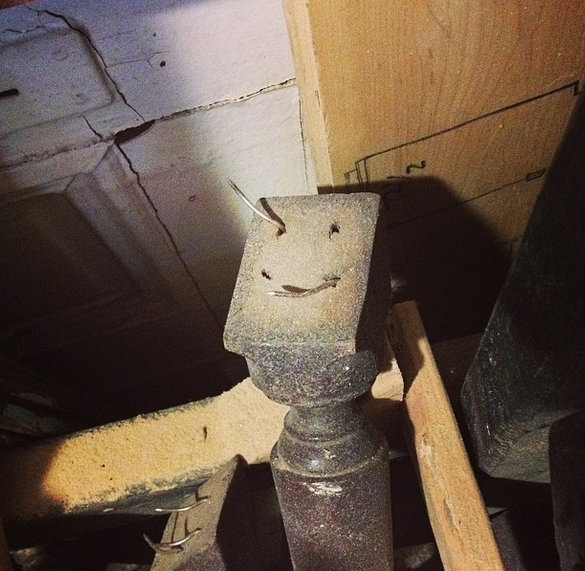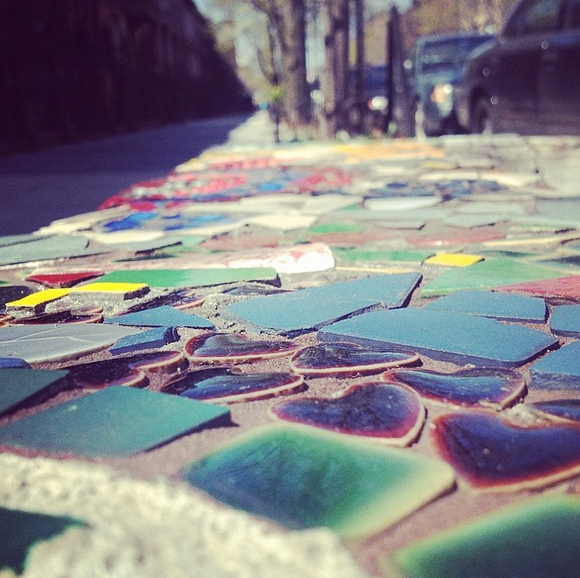
The creativeproductis subordinate to the creativemoment,
the creative moment is subordinate to the creativeprocess, and the creative process is subordinate to the creativelife.
And so, the question becomes, what does the creative life
look like?
Howard Gruber asked the same question. He was a pioneer of
the psychological study of creativity, most widely known for his books on the
development of Darwin’s thinking on evolution. But unlike many of his cognitive
contemporaries, he rejected the notion of the elusive eureka moment, that great
theories arrive in flashes of insight. “With all due apologies to thunderbolts,
he famously said, creative work is not a matter of milliseconds, minutes or
even hours, but of months, years and decades.
Gruber presented a gradualistic view of creativity. That the
creative individual was someone who acted at all times with knowledge, purpose
and affect. Someone whose work flowed out of the world and back into it. In the
intriguing book, Notebooks of the Mind,
he takes a refreshingly existential and holistic approach to the question of imagination,
riffing on what he called the regenerative possibilities of a creative life:
“A creative moment is
part of a longer creative process, which in turn is part of a creative life.
It’s not a finite system that comes to rest when it has done good work, but one
that urges itself onward. It’s not a runaway system that accelerates its
activity to the point where it burns itself out in one great flash. The system
regulates the activity and the creative acts regenerate the system. The
creative life happens in a being that can continue to work.”
Meaning, the job of a creator requires a commitment to a
developing and continuing set of unending, interacting, interdependent and
mutually modifying long range enterprises. And in order to become prolific in
our work, Gruber’s research and case studies suggest a
helpful set of attitudes called the
evolving systems approach, which must be cultivated.
The approach is developmental,
meaning our creative work evolves over long periods of time. The approach is pluralistic, meaning our creative work
exploits not one, but many metaphors, relationships and projects. The approach
is interactive, meaning our creative
work exists within historical, societal and institutional frameworks, always
conducted in relation to the work of others. And the approach is experiential, meaning our creative work
is the product of our participation in the world’s needs and feelings.
Not just the creative product. Not just the creative moment.
Not just the creative process.
The creative life.
Joss Whedon is the poster boy for what the creative life
could and should be. As a screenwriter, film and television director, producer,
comic book author, cult icon, composer and actor, his contributions to popular
culture are innumerable. He’s the premier cult creator. Joss doesn’t just make
movies about superheroes, he is a
superhero.
What’s more, if you trace the trajectory of his work, it
closely corresponds to Gruber’s theory of this evolving systems approach.
There’s even a fascinating book called Joss
Whedon: A Creative Portrait, which that tracks his entire career arc. Consider
these key characteristics of his life:
He was the offspring
of two generations of television writers. He was a childhood fanboy of popular
culture influences. He had apprenticeships and mentors and experiences creators
to channel his curiosities. He valued making and leaving tracks as part and
parcel of the process itself. He established social environments and peer
groups for nurturing his work. He made grand goals attainable by inventing and
pursuing subgoals. He developed an identity as a creative person with a sense
of his own specialness. And he had at his disposal a number of modalities of
representation.
Is it any surprise he’s so prolific?
And understandably, few of us will ever experience the level
of success and influence and significance of Joss Whedon. But his story serves
as a template. It’s a modern exemplar of how to build a creative life, from
which the creative process, the creative moment and the creative product are
natural outpourings.
I struggled with this in the early part of my career. As a
writer, I romanticized the notion of constantly disappearing into my work. I coveted
the fantasy of locking myself in a room and refusing to come out until the work
was done. And so, I seduced myself into thinking that isolation and detachment was
necessary to become the artist I wanted to be.
But as my mentor so eloquently reminded me, it’s
not enough to write something worth reading, we have to do something
worth writing.
Artists need to be interactive, reactive and proactive. Our first responsibility as creators is
to be human beings, to be real people, whose unique reservoirs of life
experience color the canvas with rich textures. We have to reengage with the
world and procure meaning outside of our art, even if that means battling our
own antisocial tendencies. Otherwise, we never get out of our own heads. Our
perspective remains myopic. And our work lacks the necessary spirit of
humanness and ordinariness because we never spend time with other ordinary
humans in ordinary places doing ordinary things.
I’m reminded of the classic book Art & Fear, which outlines the daily challenges and doubts,
both practical and psychological, in making art. When the book was first
published, it quickly became an underground classic. And with the help of
massive word of mouth through online communities, it became among the bestselling
books on artmaking and creativity.
The authors, two working photographers who grappled daily
with the problems of making art in the real world, wrote the following:
“When you are lazy,
your art is lazy. When you hold back, it holds back. And when you hesitate, it
stands there staring, with hands in its pockets. But when you commit, it comes
on like blazes. Your art is not some
residue left when you subtract all the things you haven’t done, it is the full
payoff for all the things you haven’t done. It’s living your life in a way that
your art gets done over and over.”
Ultimately, we can’t self express if we don’t create a self
to express.
Art is subordinate to life, not the other way around. If you
want to master the creative process, summon the creative moment and ship the
creative product, start by living the creative life.
Everything else is secondary.



